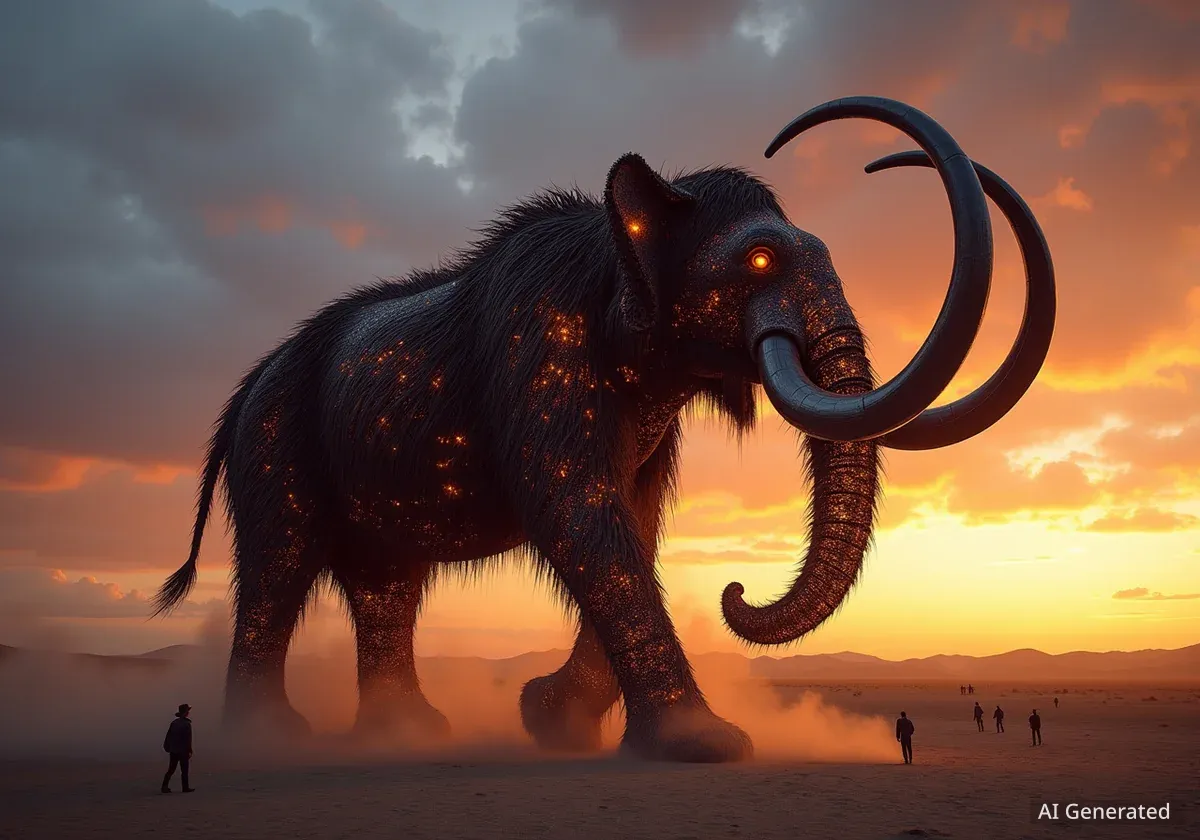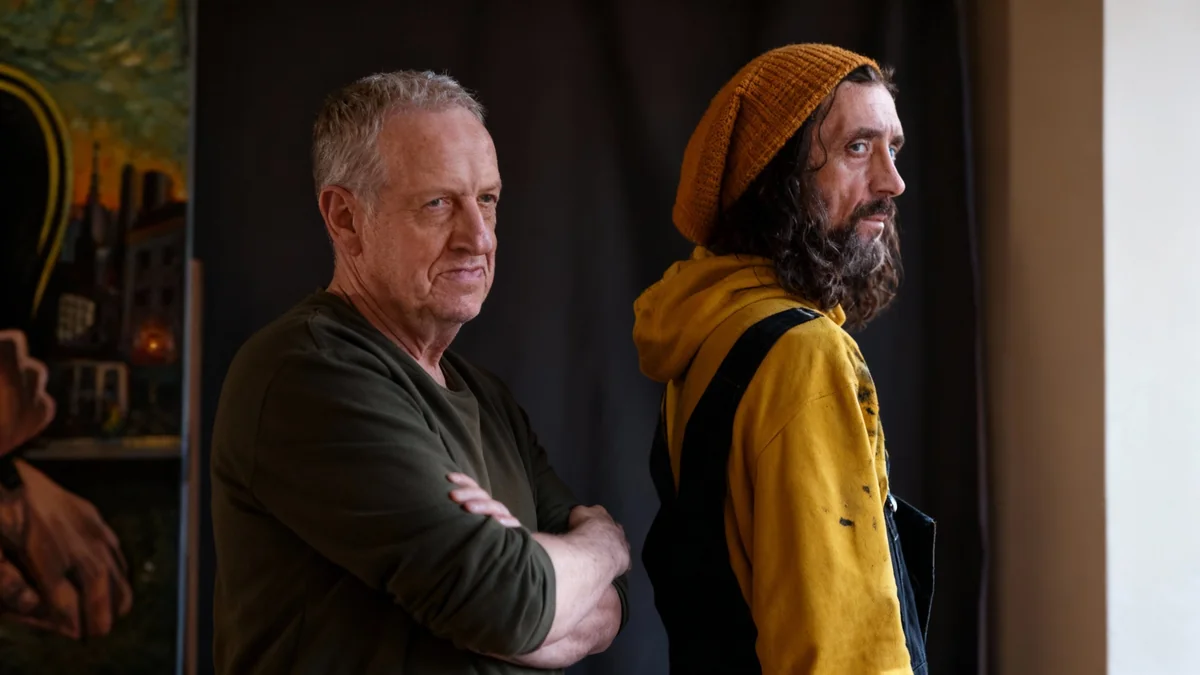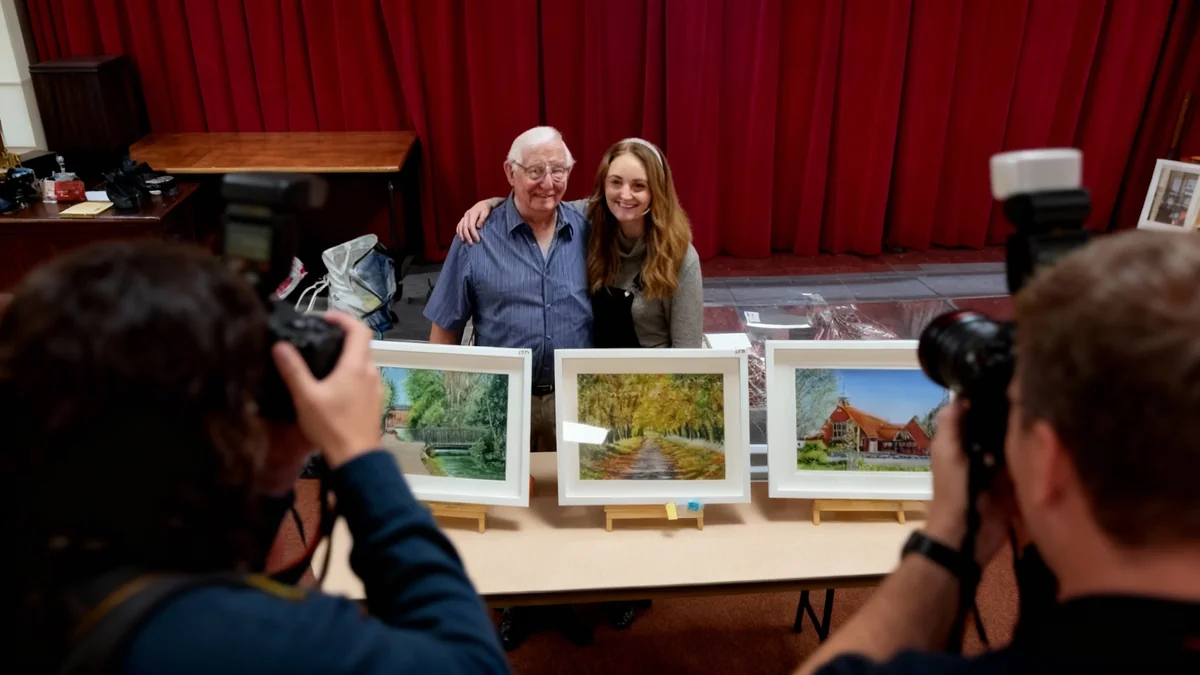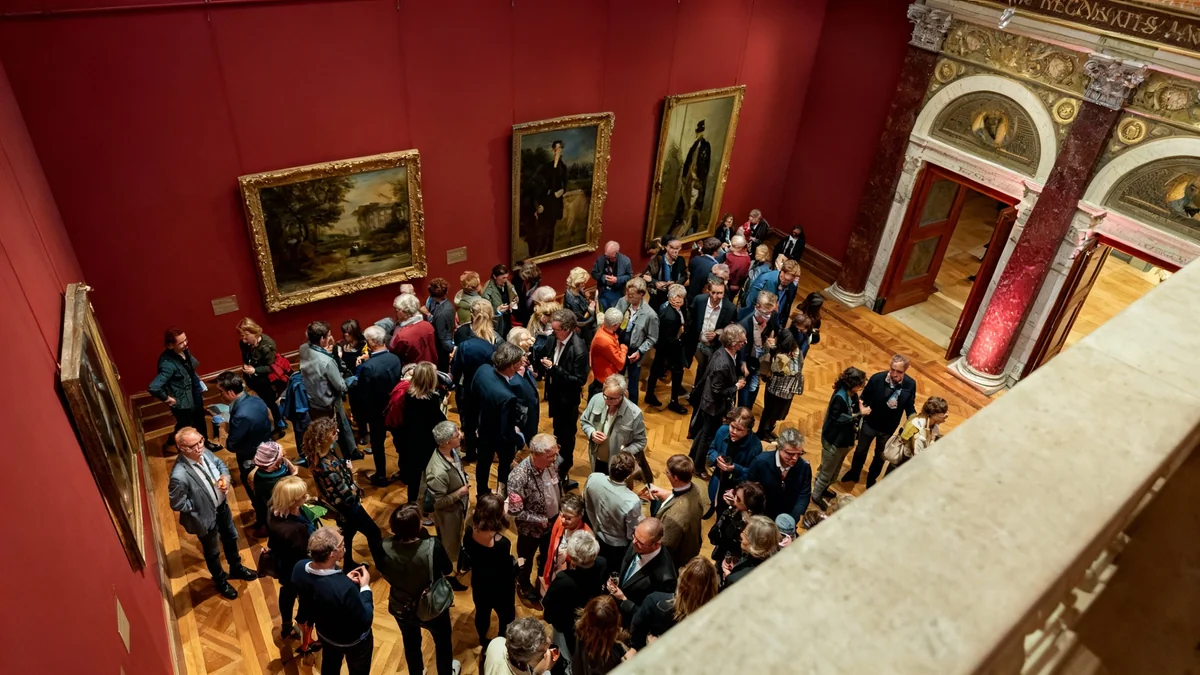Bozeman, Montana metal sculptor Clinton Lesh recently unveiled an 8,000-pound woolly mammoth sculpture at the annual Burning Man festival in Nevada. This monumental creation, measuring 12 feet tall and 22 feet long, follows Lesh's 12-foot jackalope from the previous year, marking another significant achievement in his large-scale metal artwork.
The mammoth, constructed over five months, features more than 5,000 hand-welded metal 'hairs' and distinctive LED panels hidden behind trap doors. Its journey from Montana to the Black Rock Desert required a specific design that allowed the sculpture to split in half for transportation.
Key Takeaways
- Montana artist Clinton Lesh created an 8,000-pound woolly mammoth for Burning Man.
- The sculpture is 12 feet tall and 22 feet long, featuring over 5,000 hand-welded metal 'hairs'.
- It took five months to build and was designed to split in half for transport.
- The artwork was inspired by the Burning Man theme 'Tomorrow and Today' and current mammoth cloning research.
- Materials for the sculpture were sourced entirely from Montana.
From Jackalope to Mammoth: Lesh's Artistic Evolution
Clinton Lesh has dedicated nearly a decade to transforming metal scraps into imposing art. He earned his art degree from Montana State University. There, he established a connection with Jim Dolan, a well-known Montana sculptor. Dolan is recognized for his 'Blue Horses' in Three Forks and other works throughout the state.
Lesh's previous large-scale work for Burning Man was a 12-foot jackalope. He described the jackalope as 'kind of our Bigfoot of eastern Montana.' This piece resonated with childhood wonder, evoking the desire to discover such a creature.
Sculpture Specifications
- Weight: 8,000 pounds (4 tons)
- Height: 12 feet
- Length: 22 feet
- Construction Time: 5 months
- Hair Count: Over 5,000 hand-welded metal pieces
Inspiration and Theme
The annual Burning Man festival, held in Nevada’s Black Rock Desert, draws approximately 80,000 people. Participants build a temporary city focused on 'radical self-expression and decommodification.' Each year, around 75 large-scale artworks receive commissions, with grants totaling about $1 million awarded to artists.
Lesh received a grant for his mammoth sculpture. The theme for this year's festival was 'Tomorrow and Today,' which focused on the future. Lesh chose to interpret this theme uniquely.
"I wanted to stand out, so I looked into the past — dinosaurs, Ice Age animals. And I heard that they were cloning mammoths. And I was like, well, that’s kind of perfect," Lesh explained.
This approach allowed him to connect historical elements with future possibilities, particularly the emerging field of de-extinction.
Construction and Design Challenges
Building an 8,000-pound sculpture presented numerous technical challenges. The mammoth's tusks were intentionally made larger than their historical size, a design choice Lesh felt improved the overall aesthetic. The sculpture's surface is covered with more than 5,000 individually welded metal 'hairs,' adding texture and detail.
A signature element in Lesh's work is the inclusion of trap doors that reveal interior LED panels. "I’ve got about 20 of these LED panels set up on the inside of here," he stated. These panels provide an internal glow, enhancing the sculpture's presence, especially at night.
The most difficult aspect of the project involved preparing the mammoth for transport. Lesh had to design the sculpture to split into two halves. The tusks were also made removable. This modular design was essential for moving such a large piece from Bozeman, Montana, to Nevada.
About Burning Man
Burning Man is an annual event in the Black Rock Desert, Nevada. It is a temporary city built by participants. The event focuses on community, art, self-expression, and self-reliance. Large-scale art installations are a central part of the experience, often funded through grants from the Burning Man Project.
The festival runs for one week, culminating in the burning of a large wooden effigy, known as "the Man," and a temple structure.
Impact and Montana Roots
At Burning Man, the mammoth sculpture quickly became a popular gathering point. Lesh received many positive comments. He noted that a couple even chose to hold their wedding ceremony in front of the sculpture. "There was a couple that got married in front of the mammoth this year. They were like, ‘This is our favorite sculpture, so we decided to do our ceremony in front of it,’" he recounted.
All materials used for the mammoth were sourced within Montana. The eyes, described by Lesh as "very soft and add a soul to him, almost," were crafted by a glass blower in Townsend. The stainless steel for the sculpture came from a company in Billings.
Representing his home state through his art was important to Lesh. "It’s an an honor. A lot of people view Montana as this beautiful state with all these wonderful things going on, and then when you can bring art from Montana? They’re like, ‘Oh, they’ve kinda got it all up there,’" he observed.
Future Plans and Sales
Lesh intends to return to Burning Man next year with another large-scale creature. After the festival, these impressive sculptures become available for sale. His previous jackalope sculpture now resides in New Mexico. The mammoth sculpture is currently still on the market, awaiting a new home.
Lesh's work continues to highlight the artistic talent emerging from Montana. His ability to blend historical inspiration with modern themes and engineering prowess makes his creations notable at national art events.




